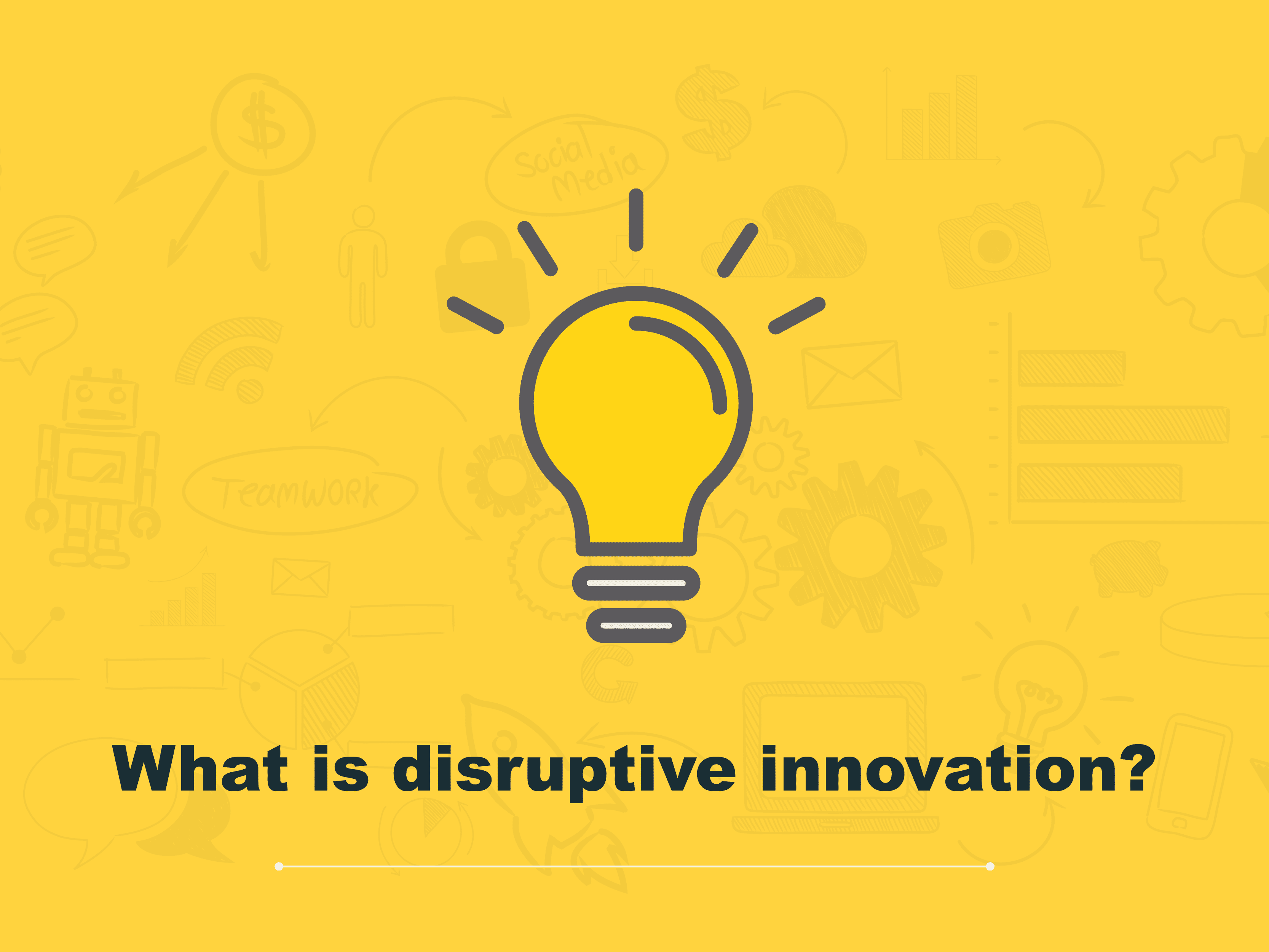What is disruptive innovation?

There are several theories that exploring marketing choices. Professor Clayton Christiansen’s theory of disruptive innovation has proved to be a commanding way of thinking about innovation-driven development or growth. The popularity of the theory itself creates threats on its matters because many people have been misunderstood the core concepts and have given misinterpretation of the ideology. Furthermore, essential modifications in the theory over the last 20 years seem to have been outshined by the popularity of the initial formulation. As a consequence, the theory is sometimes criticized for inadequacies that have already been addressed.
Disruptive innovation in a nutshell
Coined in the early 1990s by Harvard Business School professor Clayton Christensen, the term has become effectively everywhere from Wall Street to Silicon Valley. Therefore, it’s also one of the most misinterpreted and misapplied terms in the business vocabulary. Disruptive Innovations are not inventions that looking to produce more quality goods/services; rather they are innovations that make products/services more reachable and reasonable, thereby making them accessible to a larger population.
Clayton Christensen interpreted the concept of disruptive innovation in the book “The Innovator’s Solution,” which was a follow up to his “The Innovators Dilemma” published in 1997. Christensen speculated that there were two types of technologies that businesses dealt with. Sustainable technologies were those that endorsed a business to incrementally improve its operations on an expected timeframe.
These technologies empower the business to remain competitive. Disruptive technologies and the way they are incorporated—the disruptive innovations—were less easy to plan for and probably more devastating to companies that did not pay enough attention to them.
Disruptive innovation refers a process by which new product/services slowly penetrates to the marketing niche of an existing incumbent because the incumbent only seeking to sell their product/services to the larger population that they making out the most of the profits. At this time the entrant giving their product/services at a lower cost than existing offerings thereby displaces the marketing leaders in that particular market space and transforming the industry. An example of contemporary disruptive innovation is the Internet, which meaningfully altered the way companies did business and which adversely impacted companies that were reluctant to adapt to it.

slidebazaar.com
Are all technologies disruptive innovations?
This question may clear your doubts about Christensen’s theoretical framework. What makes a technology or innovation “disruptive” is a point of dispute. The term may be used to label technologies that are not truly disruptive. As stated above, the Internet was disruptive because it was not a repetition of earlier technology. It was something new that created unique models for making money that never existed before. Definitely, that created damages for other business models.
After the advent of the internet so many businesses have been out lashed. A classic example of the disruptive innovation of the Internet being unleashed was the restructuring of distance education and the bookselling industry. The video libraries have vanished from our nearby town and the mobile phone recharging hubs may be in a big threat after the introduction of smartphone and online paying portals.
Wherefrom disruptive innovation originates
Disruptive innovations are made possible because they get underway in two types of markets that incumbents supervise. Low-cost materials come out because existing manufacturers (incumbents) naturally try to offer their most lucrative and demanding customers with ever-improving products/services, and they pay less responsiveness to less-demanding customers. In fact, incumbents’ offerings often exceed the performance necessities of the latter. This creates an opportunity for the disrupters to provide cost-effective products to the low-end customers (with maximum quality)
In the case of new-market positions, disrupters make a market where none existed. Put simply, they find a way to convert visitors to customers. For instance, before the introduction of Amazon and eBay, e-commerce couldn’t get its momentum. It was only a small portion of society has been engaged in online shopping. Now, the scenario has been changed, most of the smartphone users do online purchasing even if they don’t need a product. This is the victory of innovative disrupters they made a market place from the nothingness.
According to Christensen’s theory of disruptive innovation, incumbent businesses themselves help create the conditions that let disruption to happen. The established businesses focus on refining their products to meet the requirements of their biggest (and most profitable) customers and, as a result, deliver products that do not match the needs of its other, smaller customers. This provides an opening for newer businesses to come into space and increase market share that they can then build upon.

for business templates click here
Christensen stated that disruptive innovation is a process. Disruption happens when the smaller company’s product/service becomes the main choice, displacing the incumbent’s product/service.
Why disruptive innovation is important
Business professionals perceive disruptive enhancement as significant for bringing advantage to customers and society, as the disruptive innovator creates a better offering (often at a lower price) while at the same time fashioning new value and encouraging additional improvements beyond the early repetitions of its product or service.
According to business experts, the reasons executives must be aware of disruptive innovation and how it happens are two-fold. Knowledge of how disruptive innovation works will help managers prepare their companies to forestall innovations that could become competitors. It will also give managers a better sense of whether, when and where they should support fundraising into their own strategic development of possible disruptive innovations.
Conclusion
Disruptive innovation will go on with the new demands of the market. Challenges in the market will pull you to find out more innovative technologies sometimes that may throw out existing industries. The principles of disruptive innovation let organizations take a step back and analyze their existing products and services, what areas can be focused, where an opportunity exists and how to reach value addition of the existing product/services. The existing businesses should prepare to face the mass entry of disruptive innovation because it may swallow the current business formulas and wipe out the entire business models in quick times.


